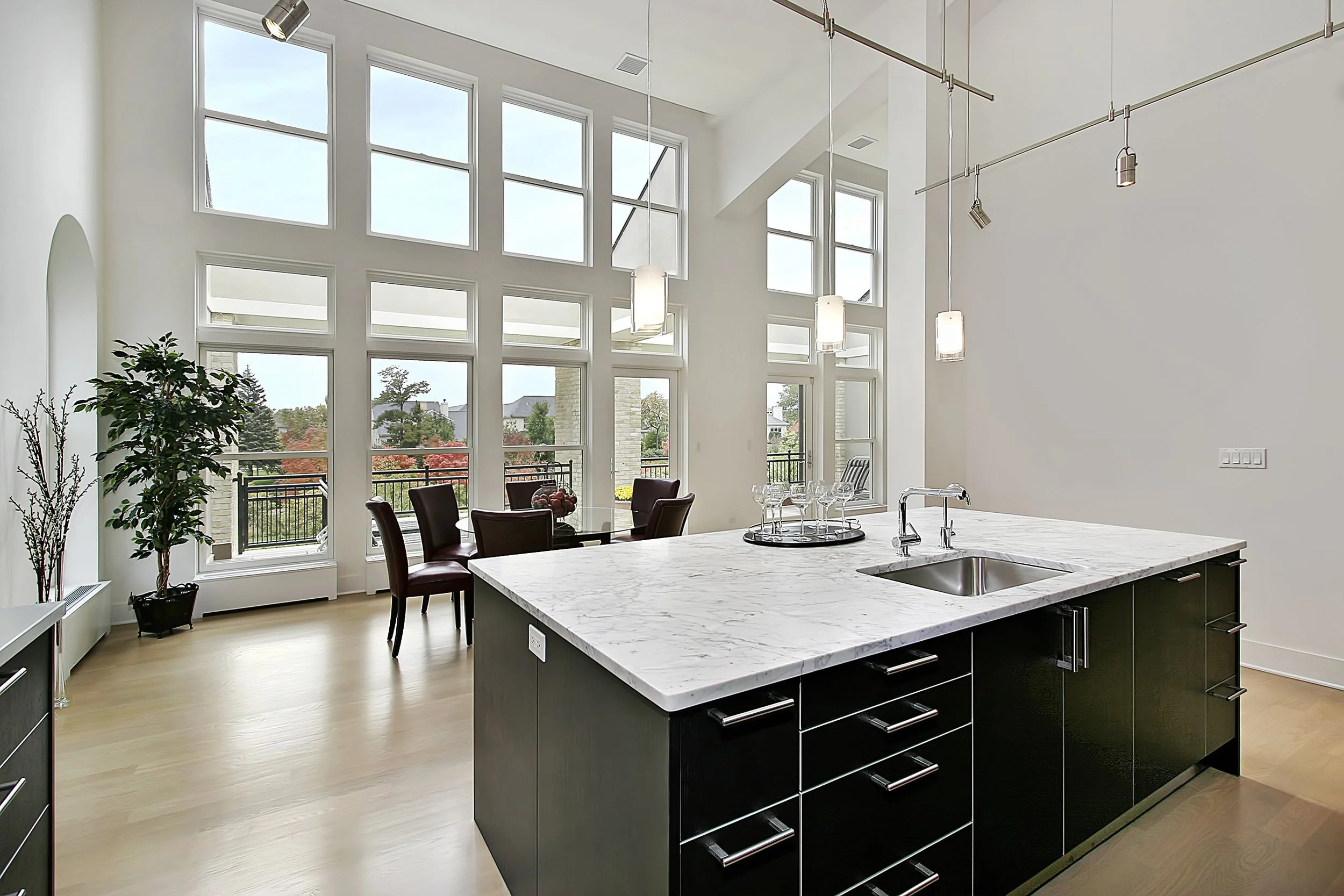
Vinyl Windows are the Material of Choice
Plastics at Home
The impact of plastics in the home has been profound – both inside and out. Today’s working parents and busy homes demand the convenience of plastic packaging and need the services plastic packaging can provide. More and more, consumers are turning to plastic packaging because it:
Protects products – Plastic wrap allows perishable foods to retain their freshness longer. Resealable and storage bags allow access while protecting leftovers.
Resists breakage – Shatter-resistant plastic bottles are safe for use in kitchen, bath or laundry.
Makes handling easier – Economy sizes weigh much less in plastic, and convenient handles make them easy to use – saving both effort and money.
Allows tamper protection – Shrink-wrap bands and tamper-evident/child-proof closures protect consumers and provide peace of mind for parents.
Adds convenience – For microwave cooking, plastic trays are the package of choice for consumers.
The use of plastics in the home extends far beyond packaging.
Today’s homeowners and building professionals rely on plastics more and more.
Vinyl Window & Door Products - Plastic has a prominent position in both fenestration and entryway applications. Today’s vinyl window and door products are made from plastic materials that are durable, require low maintenance, have superior color retention, and ensure trouble-free use for the life of the product.
Electrical Components - Without plastic sheathing few homeowners would feel safe using electricity. A multitude of plastic products provides for the safe use of electricity.
Carpet - Stain and crush-resistant carpeting is a plastic product. The use of plastic ensures a durable product that will be enjoyed for years.
Insulation - Plastic foam insulating panels offer excellent insulating properties, ease of handling and installation, without any of the concerns for airborne particulate matter.
Plumbing Supplies - The majority of our plumbing needs are handled by plastic PVC or ABS pipe. Tup surrounds and even full shower units are composed primarily of plastic.
Countertops - The advanced plastic countertops of today can be made with the impact resistance of granite, while possessing any number of custom finishes.
Upholstery - Much of our furniture upholstery incorporates plastic fibers. Both the covering and padding gain benefits from plastic’s durability, stain and fade resistance.
More than 60% of the polyvinyl chloride (PVC) resin produced in the United States, today, is used in building and construction and related industries. Commonly known as vinyl, its popularity in this market can be attributed chiefly to its competitive, stable cost base and wide processing capability. Vinyl has many inherent characteristics that make it an ideal choice for a variety of building and construction applications.
Ease of molding or shaping
Durability under all environmental conditions
Good mechanical strength and toughness
Excellent resistance to abrasion
Good chemical and electrical resistance
Good barrier to gases
Low maintenance material
Excellent flame-retardant characteristics
Easy to color and decorate
Vinyl is a Popular Material Choice for Windows
As polyvinyl chloride windows and doors have gained more acceptance in the marketplace and are being sold into many different climatic regions, questions continue to arise about vinyl’s suitability for areas with a warmer (or cooler) climate, very high (or low) humidity, salt air or pollution, etc.
Questions like: Will the PVC disintegrate and disappear in a week, a year, or a decade? Will heat turn the framing into a soft, melted material unrecognizable as a window? Will the window’s color change from white to yellow or brown to beige? If the PVC framing is hit with some object, will a chunk break off, leaving a jagged gap where there once was a smooth surface? How well will my windows perform over time? How well will they weather?
Most of these concerns are material based and can be addressed in the formulation of the compound. Rigid PVC without additives is brittle and translucent, discolors under ultraviolet light, and does not weather well over time. Other concerns are in product design and function: how much surface is exposed, what loads–wind, gravity, stresses–are expected, and how reinforcing can help ensure long-term durability.
Vinyl is Extremely Versatile
Vinyl is the most versatile plastic on the market today — primarily because it’s the only polymer that is always mixed with other ingredients before being formed into a product. With a careful balance of the right additives, vinyl compounds can be formulated to make tough, rigid items like pipe, and flexible items like vinyl membrane. Depending on the additives used, vinyl products can be crystal clear, opaque or virtually any color.
Is Heat a Problem with Vinyl?
The UV or IR (infrared) wavelength of sunlight is about the only condition that affects PVC. Other elements, such as moisture or salt air, have no effect on most PVC windows.
UV affects the impact strength and color retention of the window, but most of the degradation is just on the extrusion surface, affecting appearance only.
UV-caused degradation can be controlled with the right compounding and extrusion process. Co-extruded exterior surfaces, exterior-laminated films or other resin-blends also can improve the weathering characteristics, while still keeping within the definition of a PVC extrusion.
The more critical factor is heat build-up from IR that can cause distortion of the framing materials. But design, reinforcing, or using materials with higher heat-distortion resistance numbers can help prevent this problem. White and pastel-colored extrusions generally will perform in all U.S. climates, while darker colors may absorb more heat. Heat build-up above the ambient air temperature, caused by the sun’s heating, is typically dependent on a product’s pigmentation (color).
All of NT Window’s PVC compounds used in our window frames are low heat build-up formulations. This helps prevent high surface temperatures and increases resistance of the product to heat distortion.



